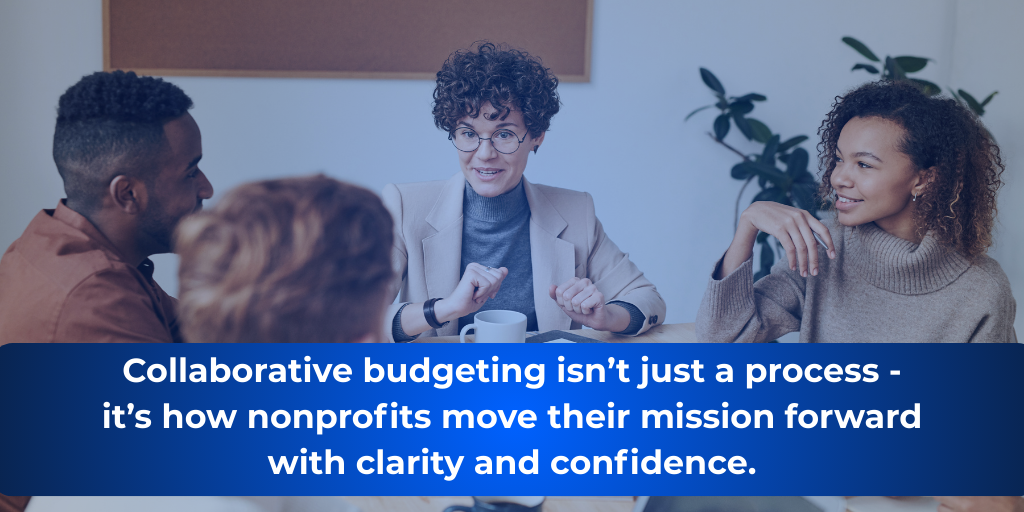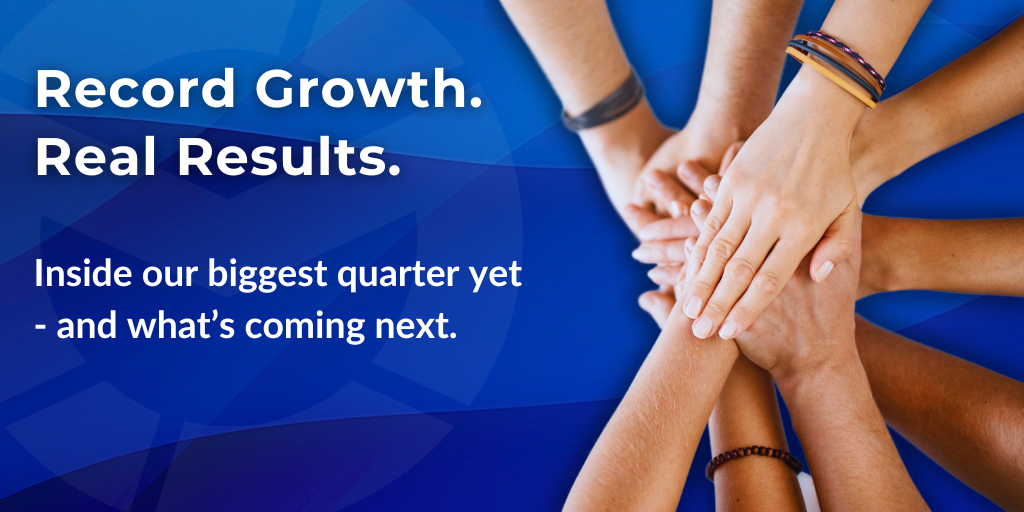Collaborative Budgeting: The Key to Empowering Nonprofits
Nonprofit budgeting is more than a financial process—it’s a mission strategy. And yet, for many organizations, budgeting still feels like an...
4 min read
Martus Solutions : September 10, 2024

In the nonprofit sector, financial transparency and efficiency are paramount. As your organization grows, the tools you once relied on, like spreadsheets, may no longer suffice. Nonprofits today face a landscape characterized by financial constraints and high stakeholder expectations, making it crucial to adopt modern solutions that streamline operations and enhance accuracy.
Excel has been a steadfast companion for many nonprofits, offering a familiar and flexible way to manage budgets. However, as your organization expands, the limitations of spreadsheets become increasingly apparent. The ability to collaborate in real-time, integrate data seamlessly, and scale operations are just a few of the advanced capabilities needed to meet today’s challenges.
Manual data entry, the risk of human error, and the lack of real-time insights can severely hinder your nonprofit’s efficiency and accuracy. If your organization is experiencing these issues, it may be time to consider a more sophisticated budgeting solution.
Here are eight signs that your nonprofit has outgrown spreadsheets and should transition to cloud-based budgeting software:
If you or your team spends an excessive amount of time manually inputting and organizing data, it's a clear sign that your current system isn't working efficiently. Manual processes are not only time-consuming but also prone to errors. Every hour spent on data wrangling is not spent on mission-critical activities like fundraising, program development, or community outreach.
Transitioning to a cloud-based budgeting solution can automate many of these tedious tasks. Automated data entry, real-time updates, and seamless integration with other financial tools mean you can spend less time on administration and more on advancing your nonprofit’s mission. Automation also reduces the risk of human error, ensuring your financial data is accurate and reliable.
CHECK IT OUT: The Nonprofit Guide to Collaborative Budgeting
Errors in spreadsheets can lead to significant financial discrepancies, impacting your nonprofit’s credibility and decision-making. These errors often occur because of manual data entry, formula mistakes, or version control issues. Even a tiny error, like a misplaced decimal point, can have significant repercussions.
Cloud-based budgeting tools offer robust error-checking features and automated calculations to minimize the risk of mistakes. By reducing the occurrence of data errors, you can make more confident and informed decisions.
Having access to real-time data is essential. Manually importing and updating data in spreadsheets can create delays, leaving you with outdated information that hinders your ability to make timely decisions. This lack of real-time insights can affect everything from cash flow management to strategic planning.
Cloud-based solutions provide real-time data synchronization, so you always have the most current information at your fingertips. This capability is crucial for maintaining efficient operations and making swift, informed decisions. Whether you’re preparing for a board meeting or responding to an urgent funding opportunity, having up-to-date financial data can make all the difference.
Managing budgets with spreadsheets becomes increasingly complex and cumbersome as your nonprofit grows. Multiple departments, programs, and funding sources can quickly overwhelm a basic spreadsheet, leading to confusion and inefficiencies. Excel, for example, has limitations in handling large datasets and complex visualizations, often causing the application to crash.
Modern budgeting tools are capable of handling the scale and complexity of growing organizations. These tools offer advanced features such as multi-departmental budgeting, grant tracking, and comprehensive reporting. Using a system built for scalability, you can ensure that your financial management processes grow alongside your organization.
Forecasting is a critical component of nonprofit financial management. It helps you plan for future funding needs, anticipate expenses, and set realistic financial goals. While spreadsheets can perform basic forecasting, they lack the advanced features needed for in-depth analysis and scenario planning.
Specialized budgeting software offers powerful forecasting tools that allow you to model various financial scenarios and assess their potential impact on your organization. These tools can help you identify trends, anticipate challenges, and make proactive decisions to ensure long-term economic stability.
When multiple people collaborate on a budget, tracking changes becomes vital to the document's integrity—knowing who made specific changes and why is difficult without a clear audit trail. This lack of accountability can lead to significant issues, including financial discrepancies and compliance risks.
Cloud-based budgeting solutions provide detailed audit trails, allowing you to track every change made to the budget. You can see who made each change, when it was made, and what was modified. This level of transparency enhances accountability and simplifies the process of identifying and correcting errors. In the event of an audit, having a comprehensive audit trail can demonstrate your commitment to financial accuracy and transparency.
Modern nonprofits rely on various software solutions to manage operations, from CRM systems to grant management platforms. Manually transferring data between these systems and your spreadsheets is labor-intensive and increases the risk of errors.
Tech savvy budgeting tools can seamlessly integrate with your existing tech stack, streamlining data management and enhancing operational efficiency. Integration ensures that your financial data is synchronized across all platforms, providing a cohesive view of your organization’s financial health. This holistic approach to data management reduces the need for duplicate data entry and ensures that everyone in your organization has access to accurate and up-to-date information.
Not everyone on your team is an Excel wizard, and relying on advanced spreadsheet skills can create bottlenecks and increase the risk of errors. Complex formulas, macros, and pivot tables require specialized knowledge that many staff members may not possess.
User-friendly budgeting tools are designed with non-experts in mind, offering intuitive interfaces and simplified processes. These tools reduce the learning curve and make it easier for all team members to contribute to budgeting and financial management. By adopting a more accessible solution, you can empower your staff to take a more active role in financial planning and ensure that your organization’s budgeting processes are efficient and accurate.
 Take the next step in transforming your financial management approach. Download The Nonprofit Guide to Collaborative Budgeting to discover a strategic approach that integrates top-down and bottom-up methods, fostering inclusion across all organizational levels. This guide offers practical steps for implementing collaborative budgeting, strategies for successful execution, and tips on aligning your budget with your nonprofit's mission.
Take the next step in transforming your financial management approach. Download The Nonprofit Guide to Collaborative Budgeting to discover a strategic approach that integrates top-down and bottom-up methods, fostering inclusion across all organizational levels. This guide offers practical steps for implementing collaborative budgeting, strategies for successful execution, and tips on aligning your budget with your nonprofit's mission.
Collaborative budgeting enhances transparency and speeds up decision-making. By involving various stakeholders, this method improves accountability and deepens your team's understanding of financial decisions.
Key benefits include:
Embrace this transformational approach and build a more resilient, transparent, and mission-driven organization today. Download your copy now and embark on your journey to financial clarity and community impact!

Nonprofit budgeting is more than a financial process—it’s a mission strategy. And yet, for many organizations, budgeting still feels like an...
![[New Guide] How to Make Nonprofit Reporting Clear, Useful, and Actionable](https://www.martussolutions.com/hubfs/Martus%20Customer%20Success.png)
You’ve seen the looks. The glazed-over eyes. The polite nods. The “Can we circle back to that?” deflection when you present the financial report at a...

Q1 2025 wasn’t just our best quarter yet - it was a milestone that marked the next chapter of growth for Martus Solutions, our partners, and the...